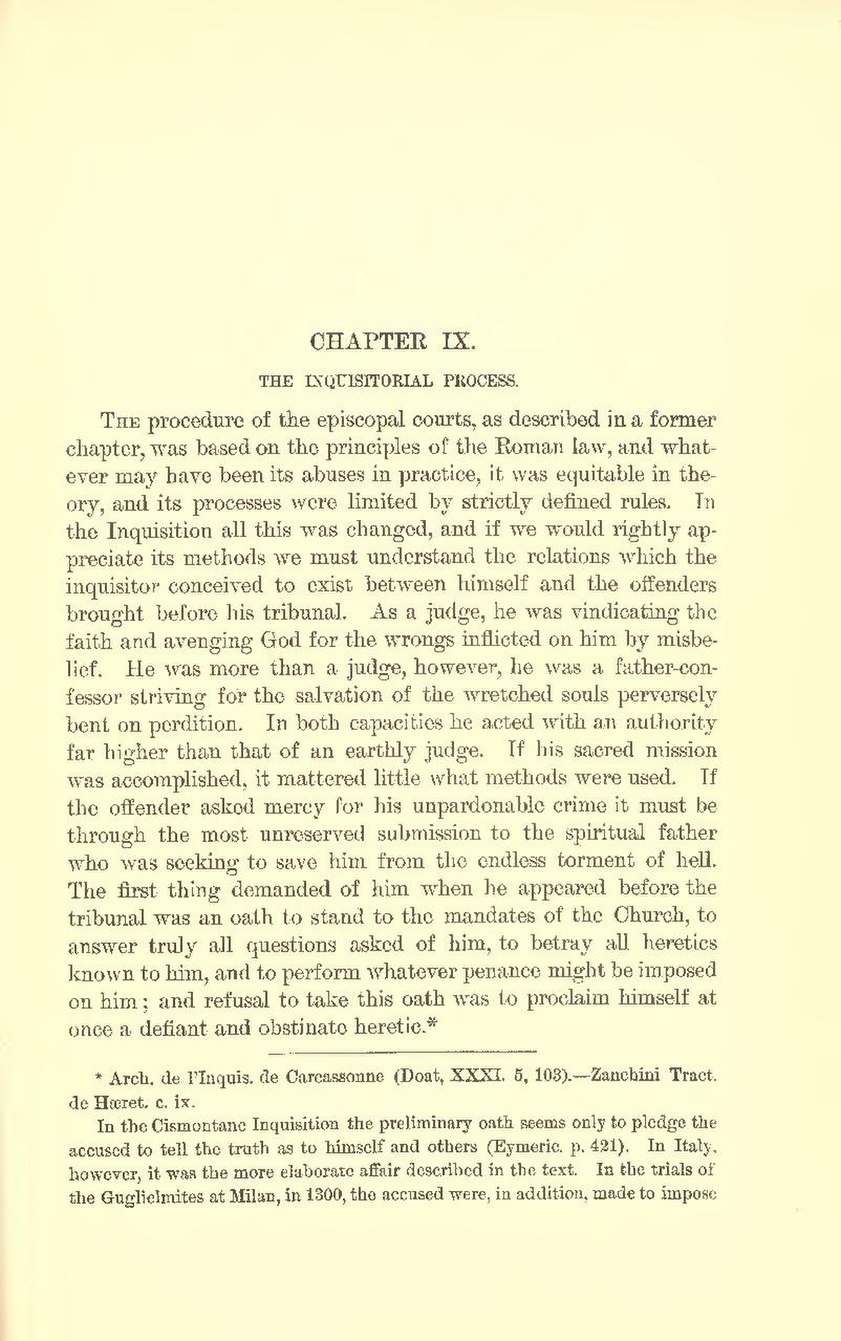CHAPTER IX.
THE INQUISITORIAL PROCESS.
The procedure of the episcopal courts, as described in a former chapter, was based on the principles of the Roman law, and whatever may have been its abuses in practice, it was equitable in theory, and its processes were limited by strictly defined rules. In the Inquisition all this was changed, and if we would rightly appreciate its methods we must understand the relations which the inquisitor conceived to exist between himself and the offenders brought before his tribunal. As a judge, he was vindicating the faith and avenging God for the wrongs inflicted on him by misbelief. He was more than a judge, however, he was a father-confessor striving for the salvation of the wretched souls perversely bent on perdition. In both capacities he acted with an authority far higher than that of an earthly judge. If his sacred mission was accomplished, it mattered little what methods were used. If the offender asked mercy for his unpardonable crime it must be through the most unreserved submission to the spiritual father who was seeking to save him from the endless torment of hell. The first thing demanded of him when he appeared before the tribunal was an oath to stand to the mandates of the Church, to answer truly all questions asked of him, to betray all heretics known to him, and to perform whatever penance might be imposed on him; and refusal to take this oath was to proclaim himself at once a defiant and obstinate heretic.[1]
- ↑ Arch, de l’Inquis. de Carcassonne (Doat, XXXI. 5, 103).-Zanchini Tract. de Heret. c. ix.
In the Cismontanc Inquisition the preliminary oath seems only to pledge the accused to tell the truth as to himself and others (Eymeric. p. 421). In Italy, however, it was the more elaborate affair described in the text. In the trials of the Guglielmites at Milan, in 1300, the accused were, in addition, made to impose
